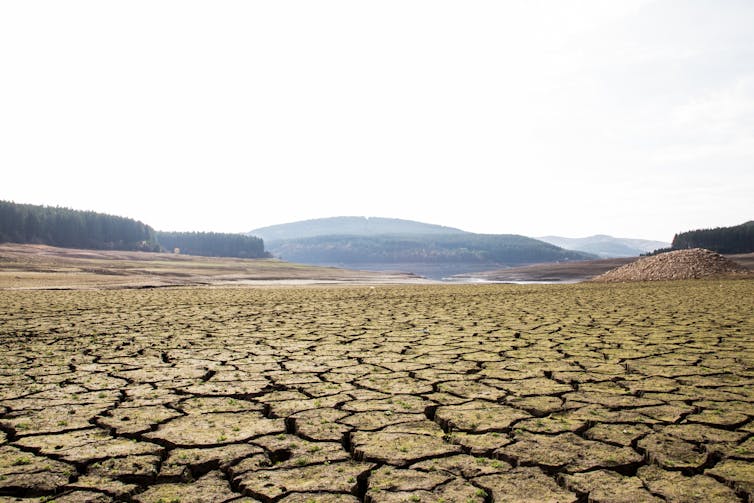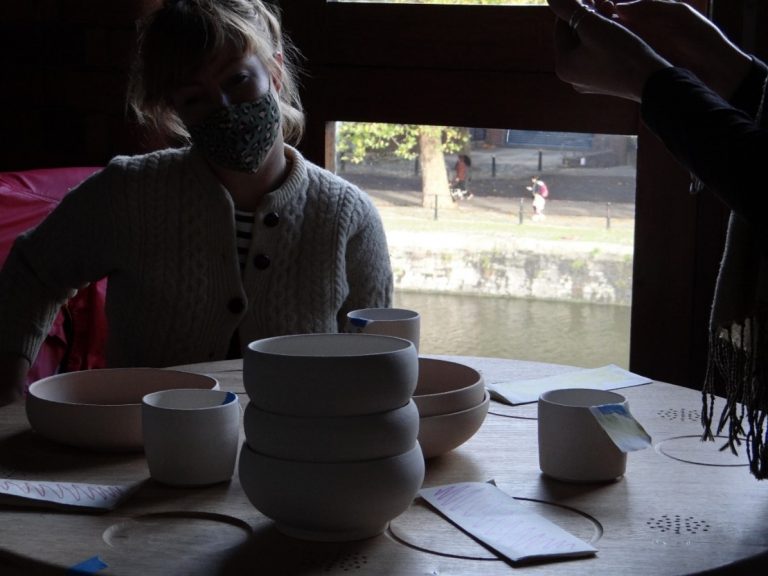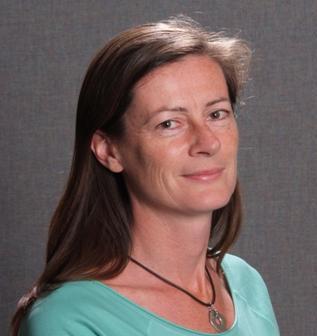 |
| The white rhino. Image credit: Meg Barstow, Postgraduate Student at the University of Bristol. |
Biodiversity loss and ecological decline pose enormous threats to humans and ecosystems alike, yet due to human activity they are occurring on a scale not seen since the last mass extinction. As part of our campaign running alongside the UN Biodiversity Conference (COP15), this blog will highlight The Cabot Institute for the Environment’s research contributions to the fight against the ‘Ecological Emergency’.
The Ecological Emergency and the need for evidence
Human activity is pushing the natural world beyond the limits of its own resilience, causing populations of species to plummet and ecosystems to collapse. As well as the widely appreciated beauty of the natural world and our responsibility to protect it, our reliance on ecosystems makes their survival essential to our own. Ecosystems provide us with food, oxygen, carbon capture, air and water purification, nutrient cycling as well as protection from erosion, floods and droughts. Under current trends, we could see ecosystems and the fundamental services they provide disintegrate within a lifetime.
The urgent need for action is starting to be recognised; a number of UK councils and organizations have declared ‘Ecological Emergency’ and the Climate and Ecological Emergency bill has recently been put forward to replace the ‘outdated’ 2008 Climate Change Act. Last year’s UN Summit on Biodiversity saw leaders from all regions of the world take the ‘Leader’s Pledge for Nature’, which commits to reversing alarming global trends and putting biodiversity and nature on the path to recovery by 2030. If ambitious but necessary targets are to be met, a strong evidence base surrounding ecological decline and its drivers will be fundamental in devising effective restoration and conservation strategies.
Caboteers have made significant contributions to global knowledge, directly influencing both local, national and international policy. Using statements from our experts, this blog will highlight some of our key research contributions to the field and discuss why they are so important in the fight against the ecological emergency. This is as part of the Cabot ‘Ecological Emergency’ Campaign, which is running alongside COP15, the UN Biodiversity Conference, which is taking place this week.
 |
| A coral reef. Image credit: Meg Barstow, Postgraduate Student at the University of Bristol. |
Restoration ecology
Restoration ecology is the science which underpins ecological restoration – the much-needed repair of damaged and degraded ecosystems.
Professor Jane Memmott, leader of the restoration ecology group, explained, “
We work on the links betweenspecies, things like pollination, seed dispersal and predation, as it’s really important to reinstate these links between species, as well as the species themselves. We are particularly interested in species that have disproportionately beneficial effects – keystone species – as these can be used to help jump start restoration programmes.”
Identifying which habitats are the most effective to target in restoration strategies is another key element of the Memmott groups research. For example, ‘The Urban Pollinators Project’ led by Jane, was a inter-city, study surveying urban, natural and farmland pollinator habitats run over four years, with the aim of establishing urban restoration opportunities.
While urbanisation is known to be one of the drivers of biodiversity loss, the project found that cities in fact provide unique restoration opportunities. It found that the most beneficial actions for supporting pollinator networks were increasing the area of allotments, which were pollinator hot-spots, as well as strategic management of gardens and green space through incorporation of pollinator-supporting flower margins and meadows. Our reliance on insects to pollinate 75% of our crops and the alarming rate at which their populations are declining make this research particularly fundamental, and the findings have gone on to advise both local and national policy.
 |
| A bee, or ‘pollinator’. Image credit: Meg Barstow, Postgraduate Student at the University of Bristol. |
Experimental conservation
Experimental conservation is research involving the testing and optimisation of conservation strategies. The experimental ecology and conservation group use mathematical models, small-scale experimental systems and long-term wild population data to do this. These techniques have the advantage of being generally non-invasive, leaving the ecosystems largely undisturbed, while giving huge amounts of crucial conservation information.
Dr Chris Clements, the experimental conservation group leader, explains, “My group develops and tests models which might help us to make more reliable conservation decisions. Our work covers a range of topics, including trying to predict what species and populations might be at most risk of collapse or extinction to understanding how multiple anthropogenically derived stressors might interact to increase extinction risk.” As time is limited and extinction is irreversible, ensuring conservation strategies are optimized and supported by a strong scientific evidence base is crucial to their success.
Forest ecosystems
Forests are home to more than 80% of all land species of animals, plants and insects and are fundamental to our climate, as an integral part of the carbon cycle. Numerous global changes are causing their coverage to rapidly decline, and as well as this exacerbating climate change through reducing their ability to sequester carbon, it poses an extinction threat to the many species that call them home.
Dr Tommaso Jucker leads research investigating forests and the processes which shape their structure, composition and function. Tommaso explains “We hope to not only understand how forest ecosystems are responding to rapid global change, but also lead research that directly informs the conservation and restoration of the world’s forests.” Establishing a clear picture of what the world’s forests might look like in future is crucial to the conservation of the creatures which inhabit them, as well as for preparing for the impacts on people and climate.
 |
| A sloth in its forest habitat. Image credit: Sam J. England, PhD student at the University of Bristol. |
Aquatic habitats and oceans
The ocean constitutes over 90% of habitable space on the planet and the ecosystems within it contribute enormously to biodiversity, livelihoods, the carbon cycle and our food supply. This makes understanding the impact of human activity on these submerged worlds essential. As well as the pressure put on ecosystems by over-exploitation, pollution and habitat destruction, rising CO2 levels and are causing environmental changes in oceans, including warming and acidification.
Microbial ecologist, Professor Marian Yallop, and her group investigate aquatic microorganisms, such as algae and cyanobacteria, and their responses to environmental changes such as temperature, pH and pollutants. These often invisible microorganisms are pivotal to global oxygen production and carbon dioxide absorption, as well as occupying a critical position at the base of many food chains. This makes their fate crucial to that of the planet and all of the organisms on it.
 |
Under the sea. Image credit: Meg Barstow, Postgraduate Student at the University of Bristol.
|
Behavioral and evolutionary ecology
Evolution and adaptations are at the core of a species ability to survive. In animals, a key element of this is behaviour. Rapid global changes are having complex implications on species and in many cases, the implications of human activity on animal behaviour are only just starting to be realised. Cabot has a number of behavioural experts working to better understand a variety of species behavioural responses to human activity, in order to understand how we can better manage our environment for their conservation.
Professor Gareth Jones, who predominantly works on bats, investigates their behaviour, evolution and responses to human activity, for example, how anthropogenic light can affect them and their insect pray, as well as how they can be deterred from dangerous infrastructure, such as wind turbines.
Professor Andrew Radford is a behavioural ecologist working on bioacoustics, so the production and reception of sound, on species from all across the animal kingdom. Anthropogenic, or ‘man-made’ noise has significantly altered the sound scape of habitats throughout land and sea, therefore, it is essential to understand how this might interfere with development and behaviour so that negative effects can be mitigated. Incorporation of behavioural insights into conservation and restoration strategies can contribute significantly to their success, therefore, research in the field is a key pillar of conservation.
 |
A bat in flight. Image credit: Meg Barstow, Postgraduate Student at the University of Bristol.
|
Conservation Law
If scientific research is to have a positive impact translated into the real world, it must be implemented in policy, meaning law is a hugely important element of conservation. Dr Margherita Pieraccini from the School of Law, who works predominantly on marine conservation law, explains “My research investigates the socio-legal aspects around ecological governance, with the aim of providing a critical understanding of existing conservation laws and envisaging ecologically just ways of governance.” Ecological decline will negatively affect everyone, however the consequences do not affect communities equally, therefore, evidence based conservation laws are essential to prevent inequality and poverty being exacerbated.
The Nocturnal Problem
Establishing a full and accurate picture of where evidence is available, and where it is missing, is fundamental to shaping the future path of research and enabling us to protect all ecosystems. Dr Andrew Flack, an environmental and animal historian, is investigating what is known as ‘The Nocturnal Problem’, which is the significant underrepresentation of night-time ecologies in research. Dr Flack explains “My own historical research draws attention to the ways in which nocturnal ecologies and the threats to them have been understood, and that until very recently, scientists have neglected the impact of human activity on night-time ecologies.” Half of everything that has happened or will happen has happened in the night, therefore, nocturnal species make up significant proportions of our ecosystems. Neglecting nocturnal species in research can therefore have catastrophic consequences not only to those species, but to the diurnal (day-time) species that they are intertwined with through ecosystems.
 |
| A fox cub. Image credit: Adam Hearne, Student at the University of Bristol. |
The University of Bristol’s action on ecology and climate
As well as being at the forefront of research, Cabot’s home institute, the University of Bristol, has taken a number of actions to support ecology. Wildlife supporting infrastructure, such as wild-flower meadows, bug hotels and ‘living buildings’ are dotted strategically around the campus. The Universities green space, Royal Fort Garden, is a hub of wildlife and supports a variety of species, as well as hosting an installation, ‘Hollow’, made of fragments of 10,000 species of tree from all over the world, inspiring interest in global biodiversity. The University was also the first UK university to declare a climate emergency in April 2019, and has set world-leading targets to reach net-zero by 2030. Mitigating climate change is fundamental to protecting ecosystems, however, as ecological decline could continue alongside decarbonization, or even be exacerbated by the means to get to net-zero, it is essential that it is not overlooked in sustainability strategies.

This blog was written by Hilary McCarthy, a University of Bristol PhD Student and part of the Cabot Communicators group.
Thank you to University of Bristol students and staff for wildlife photography submissions used in this blog and across the campaign:
Adam Hearne (UoB Zoology student and wildlife photographer, www.adamhearnewildlife.co.uk, Instagram: @adamhearnewildlife)
Meg Barstow (UoB, wildlife photographer, Instagram: @cardboard.rocket)
Sam J. England (PhD student researching aerial electroreception in insects and wildlife photographer, Instagram @sam.j.england, https://www.samjengland.com)



![]()




































